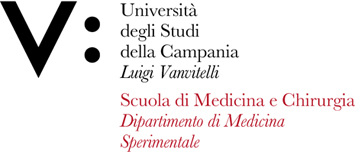Michele PAPA
Insegnamento di ANATOMIA UMANA E DELL'APPARATO STOMATOGNATICO
Corso di laurea in IGIENE DENTALE (ABILITANTE ALLA PROFESSIONE SANITARIA DI IGIENISTA DENTALE)
SSD: BIO/16
CFU: 2,00
ORE PER UNITÀ DIDATTICA: 20,00
Periodo di Erogazione: Primo Semestre
Italiano
| Lingua di insegnamento | ITALIANO |
| Contenuti | Livelli di organizzazione del corpo umano: cellulare, tissutale, di organo e |
| Testi di riferimento | Elementi di Anatomia Umana A cura di Anne M. Gilroy - EdiSES 2021 - ISBN 9788879599153 |
| Obiettivi formativi | Lo scopo medico-pedagogico dello studio dell’Anatomia Umana è quello di consentire agli studenti del corso di laurea in IGIENE DENTALE di comprendere la struttura normale del corpo umano, relativamente alla regione della testa al fine di svolgere con proficua competenza le mansioni professionali |
| Prerequisiti | ALCUNO |
| Metodologie didattiche | Al fine di valutare le conoscenze e il raggiungimento |
| Metodi di valutazione | SCRITTO/ORALE |
| Altre informazioni | PRESENZA AL 75% DELL'ATTIVITà DIDATTICA |
| Programma del corso | Lo studente in Igiene dentale deve essere in grado di riconoscere le principali caratteristiche palpabili e di imaging del cranio ed essere in grado di descrivere ed interpretare le immagini mediche pertinenti. Lo studente, al fine di poter apprendere, nel corso degli studi, agevolmente, l'esame clinico della testa deve conoscere la posizione, i rapporti delle strutture ossee, muscolari, articolari, neurovascolari, della rete venosa e il drenaggio linfatico delle seguenti principali strutture: corso e distribuzione dei nervi cranici, relativamente al cavo orale e lingua, tonsille, palato molle, faringe, ghiandole salivari, laringe. Lo studente deve essere in grado di descrivere le fasce e gli spazi fasciali in relazione alla diffusione delle infezioni. Queste conoscenze sono necessarie per comprendere nel corso degli studi le paralisi del nervo facciale, le epistassi, le tonsilliti, la disfagia, l’ostruzione delle vie aerifere superiori, lo stridore infantile, le tumefazioni del collo e delle ghiandole salivari. Lo studente deve avere accurata conoscenza dell’anatomia di superficie, dei territori di distribuzione dei nervi cranici, della sede e delle funzioni dei principali muscoli della testa. |
English
| Teaching language | ITALIAN |
| Contents | Organization of the human body: tissue, organs and systems. |
| Textbook and course materials | Elements of Human Anatomy Edited by Anne M. Gilroy - EdiSES 2021 - ISBN 9788879599153 |
| Course objectives | The medical-pedagogical purpose of the study of Human Anatomy is to allow students of the DENTAL HYGIENE degree course to understand the normal structure of the human body, in relation to the head region in order to carry out professional tasks with profitable competence. |
| Prerequisites | NA |
| Teaching methods | In order to evaluate knowledge and achievement |
| Evaluation methods | Written test/ Discussion |
| Other information | ATTENDANCE AT 75% |
| Course Syllabus | The Dental Hygiene student must be able to recognize the main palpable and imaging features of the skull and be able to describe and interpret relevant medical images. In order to be able to easily learn the clinical examination of the head during the course of his studies, the student must know the position, the relationships of the bony, muscular, joint, neurovascular structures, of the venous network and the lymphatic drainage of the following main structures : course and distribution of the cranial nerves, relating to the oral cavity and tongue, tonsils, soft palate, pharynx, salivary glands, larynx. The student must be able to describe the bands and fascial spaces in relation to the spread of infections. This knowledge is necessary to understand facial nerve paralysis, epistaxis, tonsillitis, dysphagia, obstruction of the upper airways, infantile stridor, swelling of the neck and salivary glands during studies. The student must have accurate knowledge of the surface anatomy, the distribution territories of the cranial nerves, the location and functions of the main muscles of the head. |








